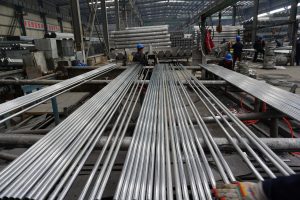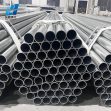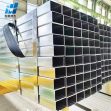peak node of steel carbon delay
As we all know, since the carbon reduction schedule of galvanized steel pipe has been determined, as one of the key industries of carbon peak carbon neutrality, the balance between development and carbon reduction has become an important issue in front of the iron and steel industry.

The steel industry is the largest emitter of carbon in manufacturing, second only to the power and thermal industries among major sectors. At the same time, China’s steel output accounts for 57% of the world’s total, and carbon emissions from China’s steel industry account for over 60% of global carbon emissions and over 15% of domestic carbon emissions. Therefore, the steel industry is regarded as a key area of carbon peak carbon neutral efforts.
However, the green and low-carbon development mode is not simply energy saving and emission reduction. For the steel industry and the domestic economy, development and carbon reduction are equally important. As an important basic industry of national economy, economic development and iron and steel industry are inseparable. In the fourth quarter of last year, under the influence of multiple factors such as energy consumption dual control, power supply shortage and environmental protection production restriction, steel production of cold rolled steel pipe decreased significantly quarter-on-quarter and year-on-year.
Data show that in the fourth quarter of last year, the national steel weekly average output fell 11.3% compared with the third quarter, compared with the same period in 2020 down 15.6%. Meanwhile, steel demand in the fourth quarter fell by 8.25 percent quarter-on-quarter, down 16.8 percent and 9.9 percent from the same period in 2020 and 2019, respectively. Under the weak supply and demand of hot dipped galvanized steel pipe, steel inventory continued to decline. At the end of 2021, China’s total steel inventory was about 12.96 million tons, down 5% from the end of 2020 and only slightly higher than the end of 2019.
Although the “Guidelines” on the industry carbon peak in the rigid target constraints, but it should also be noted that the steel industry is still in the “first” in the relevant policy guidance. Therefore, iron and steel enterprises need to firmly seize the opportunity period of low-carbon development, attach great importance to and accelerate the low-carbon transformation development work of round steel pipe, implement high-quality low-carbon upgrading projects, and better adapt to the requirements of low-carbon development.
We will support local governments and key industries and enterprises where conditions permit to take the lead in achieving carbon peaking. The “Action Plan for carbon Peaking before 2030” not only puts forward that key industries and industries should take the lead in achieving the peak, but also calls for resolutely curbing the blind development of “two high” projects, and lists the steel industry as the first industry in the action for carbon peaking in the industrial sector.
Tel: +86 18202256900 Email: steel@fwssteel.com
Previous: Rebar demand is off season










